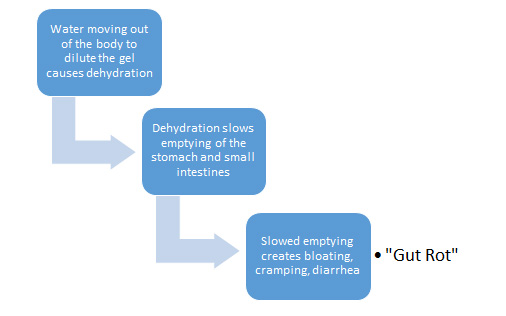Performance Nutrition: Should You Use an Energy Gel? The Good, Bad, Ugly of Gels and a Better Option
Andrew Dole, RDN
Everyday Chef & Performance Nutrition Expert, Fruits & Veggies—More Matters Full Bio

Energy gels are a convenient source of energy to prevent running out of fuel during endurance training. But did you know they can interfere with hydration and in some cases decrease performance if not used properly?
Why Use A Gel?
Running out of energy during endurance training is a legitimate concern. Even with carbohydrate loading the human body can only store a limited amount of energy. On average, after 90 minutes of continuous activity those energy stores are nearly gone. If intensity is high or terrain is challenging burning through that stored energy will happen quickly. Consuming a simple sugar source such as glucose or fructose in a gel shot, gummy cube, or jelly bean is how most endurance athletes meet their energy needs beyond the 90-minute mark.
A Better Option
Whole food solutions can easily provide the nutrition and electrolytes needed for long endurance efforts. Fruits and vegetables are portable, easy to eat, naturally full of water, and provide plenty of good fuel. Grapes, berries, or even a baked sweet potato make for great snacks during long workouts.
But if you must use a sport gel, be sure to use it properly.
How Gels Can Hurt Performance
Sugar loves water. The fancy chemistry term for water loving is hygroscopic. After eating a gel the simple sugar quickly leaves the stomach and enters the small intestine. If the concentration of sugar (osmolality) is too high, water will move into the intestine through osmosis to dilute it. Water moving out of the body and into the intestines to dilute the sugar leads to dehydration despite drinking adequate fluid. These two processes results to what most endurance athletes call gut rot: a combination of bloating, cramping, nausea, and diarrhea.
Here’s how gut rot happens …

4 Ways to Prevent Gut Rot from Gels
Gut rot isn’t limited to gels only. Any low moisture food will cause the body to react similarly, but gels are a common culprit. Thankfully there are a few things you can do to improve the body’s tolerance of gels and other low moisture energy bars.
- Drink at least 11 ounces of water with each 100 calories or gel serving. The water will dilute the sugar concentration and prevent it from pulling water from the body.
- Train with gels months before a race. Your body may need some time to adapt to both the hydration requirements and the gel.
- Try different brands. Read the label for the ingredients and the calories per serving. Trying a few different brands may help you find one that you tolerate.
- Don’t wash down your gel with sports drinks or sodas containing sugar or other forms of carbohydrate. These types of drinks will not dilute the gel enough, and the combination will contribute to gut rot. Drink plain water when taking gels.
References
*Rosenbloom CA, Coleman EJ. Sports Nutrition, A Practice Manual for Professionals. American Dietetic Association (2012).


